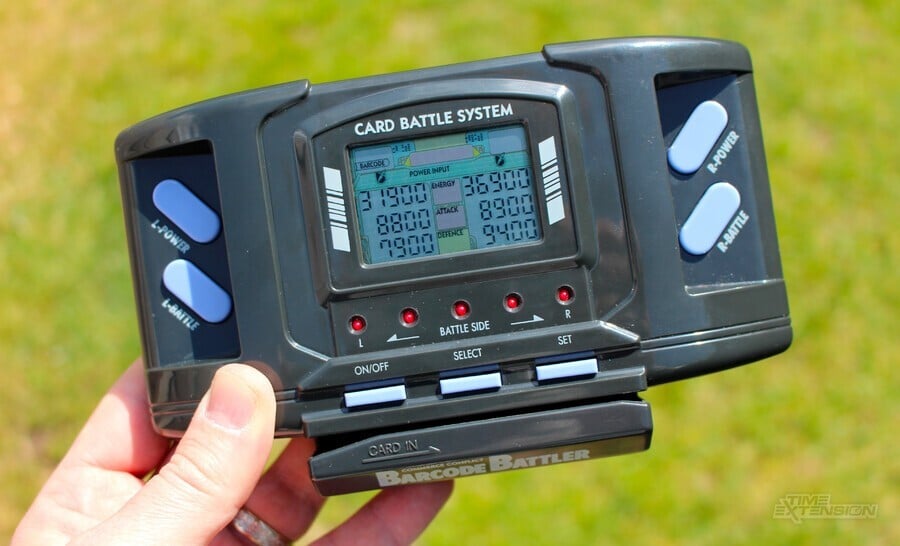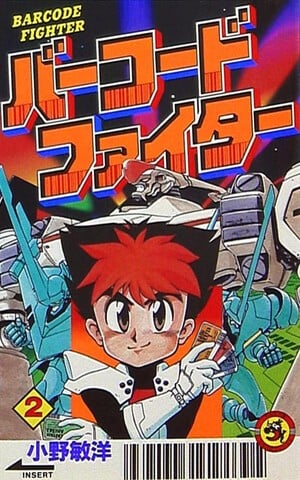
Back in the early '90s, when I would have been around 12 or 13, I recall my older sister taking me to a somewhat dubious house in a rather run-down part of a local city. I can't even recall why we were there, but one of the occupants fascinated me because his room seemed to be filled with nothing but failed technology.
His pride and joy was a Commodore CDTV—plugged into a giant CRT and playing Psygnosis' Planetside demo—but his latest purchase was a Barcode Battler, which he gushed about endlessly. How he gained the funds in order to purchase all of this gear, I'm not sure (and I probably wouldn't have wanted to find out at the time), but he made quite the impression on my young and developing mind for precisely the wrong reasons.
You see, even back then, as an impressionable youth, I knew that the Barcode Battler was a gaming dead-end, a gimmicky gadget that seemingly held little appeal to someone who already had a Game Boy in their rucksack and plenty of other, more captivating gaming devices at hand. Fast-forward to the present day, and that stigma remains—but I can at least say I now respect the hustle and admire the fact that the Barcode Battler stands for everything that was bold and decadent about early '90s gaming tech.

Launched in Japan in by Epoch in 1991 (Tomy would handle distribution elsewhere in the world), the premise of the Barcode Battler is simple: you use barcodes to generate stats for RPG-style battles, with a random number generator deciding who is the victor of each bout.
The device shipped with a bunch of character cards that were supposed to represent a range of fantasy-style wizards and warriors, but you could also use barcodes clipped from everyday products—which led to the rather odd practice of kids taking scissors to cereal boxes and the like (much to the annoyance of their parents, presumably). In fact, in Japan, there were reports that the Barcode Battler caused certain food products to sell out when kids became aware that their barcode was especially powerful.

By sliding the barcode through the Barcode Battler's finicky optical reader, you can either generate a series of stats for a character or boost their chances of success using special items. You can choose to play against the computer or a friend, but ultimately, the experience is largely the same; there are no graphics to be displayed on the Barcode Battler's LCD screen—just numbers—so your imagination has to do a lot of heavy lifting.
Each 'wizard and warrior' card features gayly-colour artwork and a surprisingly in-depth biography on the rear, and there's the scope to make up new characters for the everyday barcodes you procure from commercial products (blank cards are included for this purpose).
However, the fact that the core gameplay loop is A) very repetitive, B) frustratingly inconsistent (expect to see the 'Miss' message often; this means you haven't swiped the barcode at precisely the right speed for the unit's temperamental scanner to detect) and C) not all that engaging when you consider that there's no storyline to complete or tasks to take part in, and it's easy to see why the Barcode Battler flopped in the West.
The black and white manual bundled with the device does an admirable job of trying to fill in the gaps (there's even a narrative behind this "Commerce Conflict", although we feel rather sorry for the person who had to write it), but, when compared to the entertainment value offered by the Game Boy, it can't help but come up short.

Hilariously, the unit in the photos you see on this page was intended for sale in Germany, but at some point, Tomy must have decided to dump stock elsewhere in Europe as it includes an English user manual and sheets of stickers, which British players were expected to painstakingly apply to all of the bundled cards (also in German) so they could actually make sense of them.
In Japan, the Barcode Battler was markedly more successful, and this was due in no small part to the fact that Epoch—maker of Doraemon and Sylvanian Families—was able to secure some lucrative cross-promotional deals with the likes of Falcom, Capcom and Nintendo to give the product some additional appeal. A manga series, called Barcode Fighter, also ran from 1992 to 1994.
I'm personally a massive fan of the Street Fighter II cards, but Epoch's deal with Nintendo is perhaps the most famous of these agreements, and it saw special packs of Barcode Battler cards sold with Super Mario and Zelda themes.
Then there was the ability to connect your Barcode Battler II (an updated model released around 1992 which included an output port—this is the model we got in the West, minus the 'II' in the name) to a console like the Super Famicom and use it to unlock in-game features and items—something Nintendo would replicate later with its e-Reader accessory.
Epoch released its own video game, Barcode World, as well as Barcode Battler Senki: Super Senshi Shutsugeki Seyo!, while other games, such as The Amazing Spider-Man: Lethal Foes, Dragon Slayer II and J-League '95 included optional support for Barcode Battler connectivity. In Japan, compatible games were still being released as late as 1995—the year after the arrival of the PS1 and Saturn in the territory— which shows how commercially viable the device was in its homeland.
Trying to describe the appeal of the Barcode Battler to someone in 2025 is almost as hard as it was back at the dawn of the '90s. Back then, it was competing with the likes of the Game Boy, Game Gear and Atari Lynx, so it's little wonder that, outside of Japan, it struggled to gain any kind of foothold.
However, as nostalgia for all things from the 1990s has grown in recent times, I've come to realise there's something utterly charming about the Barcode Battler; it may be a relic from another time, but it's also a reminder that, prior to smartphones turning up and giving everyone a QR code scanner in their pocket, companies like Epoch were experimenting with ways of using the humble barcode to spark the imagination of children everywhere.
It may not have been all that successful outside of Japan, but I'm glad it tried; despite its inherent crapness, there's still a small part of me which thinks the Barcode Battler is pretty cool.
